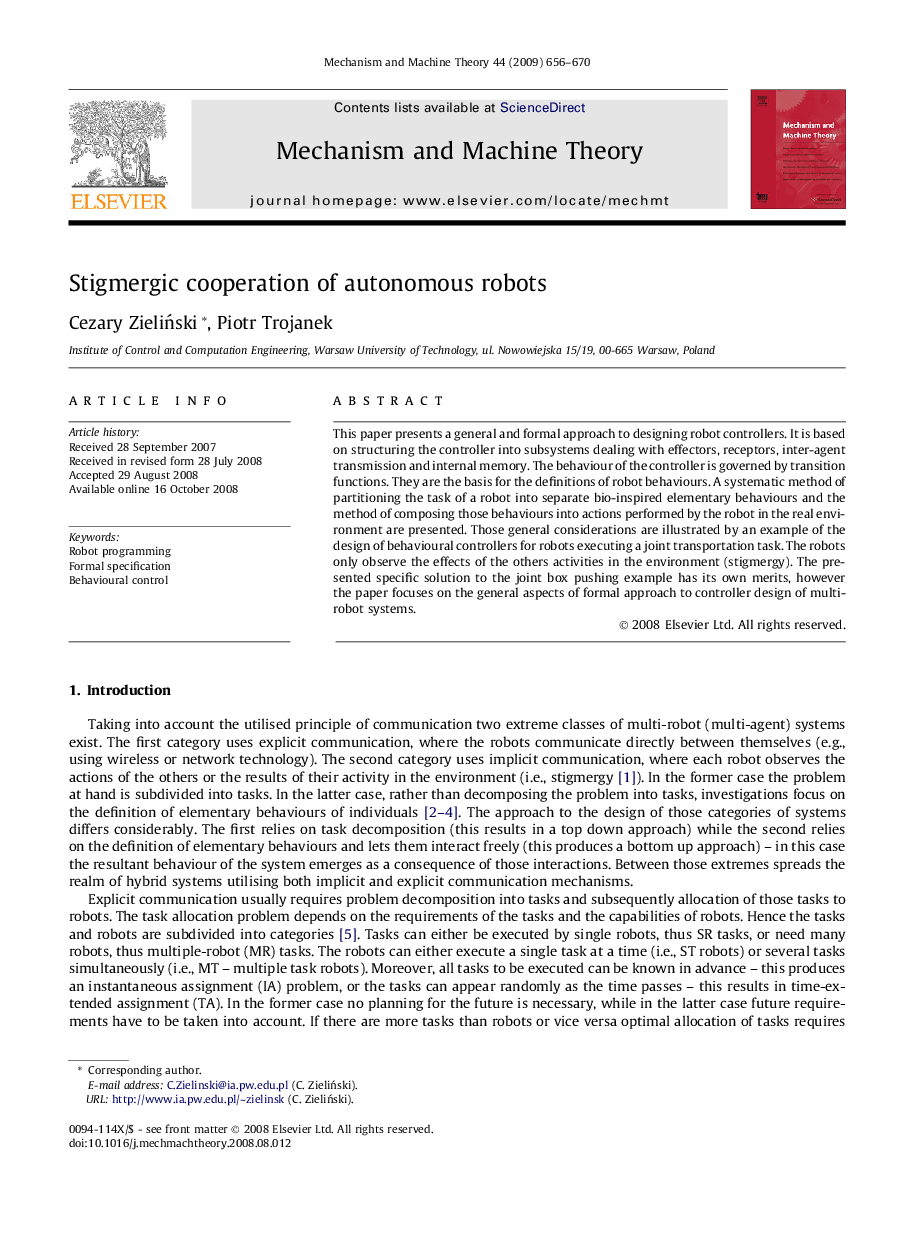| Article ID | Journal | Published Year | Pages | File Type |
|---|---|---|---|---|
| 803447 | Mechanism and Machine Theory | 2009 | 15 Pages |
This paper presents a general and formal approach to designing robot controllers. It is based on structuring the controller into subsystems dealing with effectors, receptors, inter-agent transmission and internal memory. The behaviour of the controller is governed by transition functions. They are the basis for the definitions of robot behaviours. A systematic method of partitioning the task of a robot into separate bio-inspired elementary behaviours and the method of composing those behaviours into actions performed by the robot in the real environment are presented. Those general considerations are illustrated by an example of the design of behavioural controllers for robots executing a joint transportation task. The robots only observe the effects of the others activities in the environment (stigmergy). The presented specific solution to the joint box pushing example has its own merits, however the paper focuses on the general aspects of formal approach to controller design of multi-robot systems.
